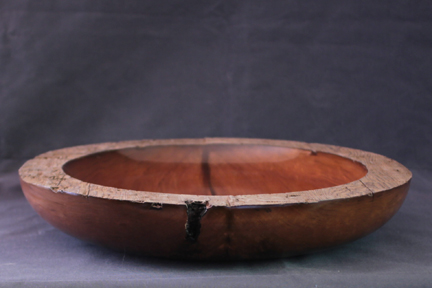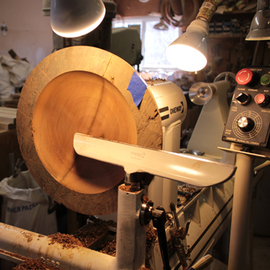This has been a phenomenal spring and now someone tells me it is already summer! Where did the time go?
Update on the cedar from the barn
I have made two pieces from this wood, one shown above "If You Could Speak to Me" and the other one below "The Tales You Could Tell":
Update on the cedar from the barn
I have made two pieces from this wood, one shown above "If You Could Speak to Me" and the other one below "The Tales You Could Tell":
With further research into this wood, I have decided that it was introduced to the barn during the final renovations in 1937. The residents of the House of Industry & Refuge were highly resourceful and would have used anything that came their way. They certainly would not have let such a prime piece of wood slip through their fingers.
The tightness of the year rings suggest that the original tree was probably 1st growth. Working with the wood has been a pleasure. The rich cedar smell on the one hand and the way the wood cut, sanded and finished on the other tell me that this was part of a prime and valuable piece of timber.
In terms of the lumber businesses in Ontario, the last of the readily accessible great stands of timber had been cut by 1937 and western wood was starting to find its way here. This piece of cedar may have been one of the early arrivals.
More on the wood from Wellington
Since I last wrote, I have brought back to the studio part of a barn beam from the House of Industry Barn, a section of the A-frame that was used for the manure removal system at the barn, part of an old log roller and some flooring from the library in Palmerston.
More to come...
The tightness of the year rings suggest that the original tree was probably 1st growth. Working with the wood has been a pleasure. The rich cedar smell on the one hand and the way the wood cut, sanded and finished on the other tell me that this was part of a prime and valuable piece of timber.
In terms of the lumber businesses in Ontario, the last of the readily accessible great stands of timber had been cut by 1937 and western wood was starting to find its way here. This piece of cedar may have been one of the early arrivals.
More on the wood from Wellington
Since I last wrote, I have brought back to the studio part of a barn beam from the House of Industry Barn, a section of the A-frame that was used for the manure removal system at the barn, part of an old log roller and some flooring from the library in Palmerston.
More to come...


 RSS Feed
RSS Feed
